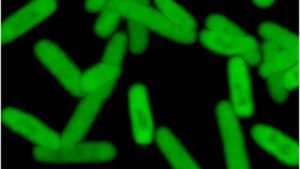Nov 30 2017
Semi-Synthetic Life With Expanded Genetic Code
 It’s interesting to follow truly cutting edge research that has the potential to significantly change our world. I include in this category research into brain-machine interfaces, regeneration through stem cells, genetic engineering, and fusion energy. I would also add research into creating synthetic life.
It’s interesting to follow truly cutting edge research that has the potential to significantly change our world. I include in this category research into brain-machine interfaces, regeneration through stem cells, genetic engineering, and fusion energy. I would also add research into creating synthetic life.
Synthetic life research views living organisms like a technology. It is, in a way, the original nanotechnology, using complex tiny machines to manufacture chemicals, collect and store energy, degrade toxins, and other functions. Scientists have been very successful in tweaking existing organisms to harness them as tiny factories. Many modern drugs are now made in this way, making drugs like insulin widely available.
Some researchers, however, want to go beyond tweaking existing organisms. What if we could create synthetic organisms, even just single cells, entirely from scratch? That is Craig Venter’s dream – to strip down cells to their bare essentials, and then use that as a template to create a completely artificial minimal generic cell. That basic artificial cell, which we understand well because we built it from the ground up, can then be modified to perform endless functions – designer cells.
There is more to this vision, however. Once we free ourselves from the constraints of existing organisms we can explore novel properties that did not happen to evolve. Evolution is powerful, and it has had several billion years to experiment with life, but evolution is also constrained by its own history. For example, all life on earth uses the same genetic code, based upon two pairs of bases in the DNA – cytosine bonds with guanine and thymine bonds with adenine. This produces a 4-letter alphabet for the genetic code (CTAG), and also gives DNA the double-stranded structure and its ability to make copies of itself. The code consists of 64 3-letter words.
Known life is also limited to 21 amino acids with which it constructs all proteins. As an interesting aside, until 1988 we only knew of 20 amino acids. Selenocysteine is the 21st, but it is unusual. It only exists in some branches of life, and it has unique coding. It is coded for by UGA in the messenger RNA (in RNA uracil replaces thymine). But UGA is also a stop codon (a code than ends transcription of the RNA into a protein), so in these organisms this one genetic word can have two meanings. This is just another example of how messy and complex life is.
This genetic code is highly conserved, shared by all known life. What if, however, we could expand the code? That is what researchers are now working on. In a recent paper Zhang et al report that they have created a semi-synthetic organism based on E. coli (a bacterium) that uses 6 bases instead of 4 (or 3 pairs instead of 2) – the pair dNaM–dTPT3 (X-Y) was added. That means there are 216 possible three-letter words rather than 64.
They were able to demonstrate that their semi-synthetic organism was able to decode RNA with the expanded bases and actually function. Further, they were able to incorporate new (what they call non-canonical) amino acids into proteins. They conclude:
The results demonstrate that interactions other than hydrogen bonding can contribute to every step of information storage and retrieval. The resulting semi-synthetic organism both encodes and retrieves increased information and should serve as a platform for the creation of new life forms and functions.
This could mean the ability to create organisms that can direct the production of new proteins that incorporate non-canonical amino acids. This can greatly increase the potential properties of those proteins beyond what ordinary cells can create. Obviously this research is in the early stages, but the results of this study show that it has potential. I also think it reflects how versatile life can be.
When we learn about biology it is often presented as a complex but delicate machine, as if one piece out of place would destroy function. It is certainly true that sometime small changes can be fatal. But in general biology is much more resilient than that. What we see as the complex kluge resulting from evolution is not necessary for any function at all. There is no one correct or optimal arrangement. Many aspects of biology can be changed or removed without destroying function – function, rather, will just be less efficient, or even just have different trade-offs.
We can even mess with the genetic code, and the protein-building machinery will still work. Function won’t be optimal, but it can get by. This demonstrates how new functions can arise through evolution – changes result in new, if less efficient, functions which can later be tweaked and optimized.
It is also interesting to think about the ultimate potential of synthetic biology technology. Without the constraints of history, we can design organisms from the top down. We can eliminate all the junk from DNA, increase its information density, and expand its repertoire. Life is, essentially, nanotechnology. It is fascinating and a little scary to think about the potential of mature synthetic biology.






